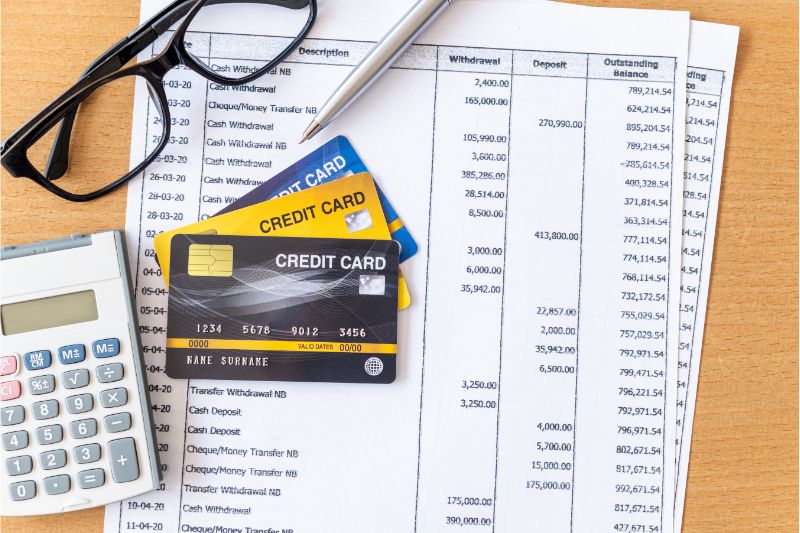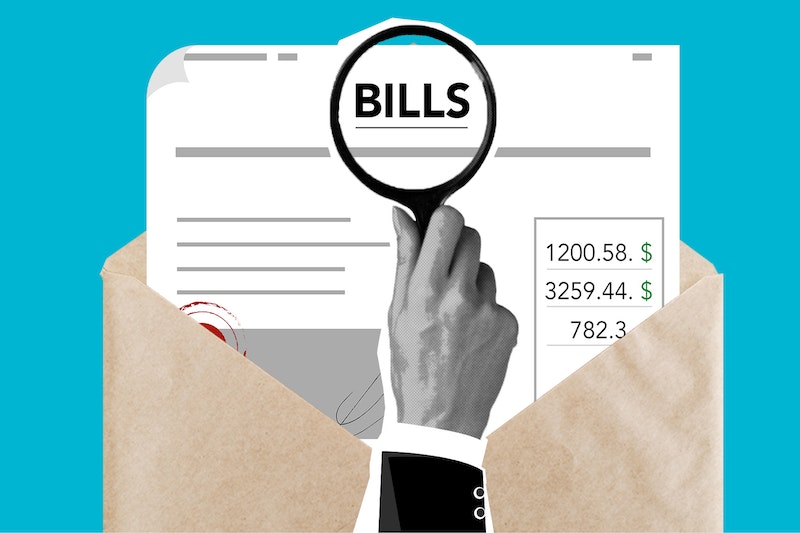How to Calculate Liabilities

Learning how to calculate liabilities accurately is important in financial reporting.
Liability – the accounting jargon usually used to refer to debt – refers to financial transactions resulting in an obligation to repay. [1]
There are three types of liabilities: Current, Non-current, and Contingent. Of the three types of liabilities, only Current and Non-current Liabilities appear on the Statement of Financial Position or the Balance sheet. Contingent liabilities only appear in the Notes to the Financial Statements.
In this post, we will focus on how to calculate liabilities presented in the balance sheet, either as current or non-current.
Why Proper Accounting of Liabilities Matter

Liabilities act as an alternative source of financing for businesses. Funding for a company’s assets comes either from equity or debt. Companies can take on debt to purchase additional assets like machinery, land, or building or as part of a company’s day-to-day operations, like using trade credit.
Proper management of liabilities is critical to running a successful business and ensuring sufficient cash flows. Companies have to account for liabilities properly since decision-makers rely on these numbers to plan cash outflows and pay suppliers on time.
Mistakes in recognizing and measuring liabilities may result in negative consequences like poor financial performance. Unanticipated obligations may also lead to a cash crunch that could hurt operations.
Companies may also pay fines if liabilities reported and submitted to regulatory agencies like the Securities and Exchange Commission are incorrect.
Where Can You Find Liabilities?
Liabilities, Assets, and Owner’s Equity appear on the Balance Sheet after a company’s assets. Using the accounting equation, which states that Total Assets are equal to Total Liabilities and Total Owner or Shareholders Equity, the difference between Total Assets and Equity should be equal to your Total Liabilities.
While Liabilities are always part of the Balance Sheet, the presentation may vary from country to country. Accountants follow specific rules for preparing financial statements.
Most countries follow the International Financial Reporting Standards or IFRS, but some countries, like Russia or the US, have their own reporting standards. There are differences between IFRS and these standards, but the applicable accounting principles for liabilities are similar.
IFRS standards require entities to maintain two separate categories Current and Non-current. However, companies may present liabilities based on liquidity if it is more relevant and reliable.
How to Calculate Current Liabilities
Current Liabilities represent business obligations that the company needs to pay in the next 12 months or the normal operating cycle. You can compute a company’s total short-term liabilities by getting the sum of all obligations due within a year.

Recording all short-term financial obligations is vital to company managers, lenders, and investors. Key financial ratios like the current ratio, quick ratio, and cash ratio use current liabilities to determine the company’s capacity to pay short-term liabilities.
Here are some of the most common types of a company’s liabilities due within a year.
Accounts Payable
Businesses use Accounts Payable to record the amount the company owes to suppliers for goods and services already delivered, consumed, or rendered but not paid. Common transactions recorded under accounts payable may include:
- Amounts paid using trade credit that often require payment in 30, 60, and 90 days.
- Checks issued but not released to payees at the end of the accounting period.
Many businesses are moving away from using paper checks in favor of electronic payments. In the near future, fewer companies will use accounts payable to record unreleased checks.
Bank Account Overdrafts
Your account becomes overdrawn when you make a payment, and your current balance is insufficient to complete the transaction successfully. If you have an arrangement with your bank, they can cover the overdraft as long as it is within the limit.
Bank overdrafts are short-term loans that banks extend to account holders to cover expenses. Banks expect you to pay the principal, interest, and overdraft fees in a few days.
Interest Payable
Companies use this account to record interest owed to lenders as of the reporting date. Interest payable may include billed or unbilled interest liability. However, some companies may use a separate account, Accrued Interest, to record unbilled interest liabilities. More on this is below.
Accrued Expenses
Some businesses often report income and expenses on a cash basis. Under this method, a company will only recognize income and expenses after receiving or paying cash. However, many businesses also use accrual basis accounting.
In accrual accounting, companies record revenues when earned and expenses when incurred, not when money changes hands. As a result, companies have to report accrued expenses incurred but unpaid at the end of the period.
Here’s an example.
A company pays interest of £1,000 for a loan every 15th day of the month. If the reporting date is the 30th day of the month, the company should accrue interest and record a liability for £500 to recognize interest owed from the 16th to the 30th day.
Interest is not the only expense accrued at the end of the period. Many companies record accrued liabilities for the following:
- Salaries
- Benefits
- Rent
Unearned Revenue
Some companies collect payments from customers in part or in full before completing the transaction. If your business did not render services or deliver goods, but you already received a payment, you need to record the transaction under unearned revenue if
Tax Payable
Company policy for recording taxes owed to the government may vary, but many businesses establish a payable account for these taxes.
Sales tax payable, payroll tax payable, and income tax payable are all current liabilities. Generally, companies pay these taxes within a year, so the related payable is under current liabilities.
Notes Payable
Notes payable are a liability supported by a written promise to pay. The written note from the borrower includes details such as the amount owed, due date, interest, and collateral pledged, if any. Notes may be current or non-current, depending on the due date.
Notes due within the next 12 months will be under current liabilities. However, if the due date is more than one year from the date of the report, it will fall under non-current liabilities.
Current Portion of Long-Term Debt
Loan arrangements typically define payment terms and periods. If a portion of a loan is due within 12 months of the reporting date, companies segregate that amount and report it as part of Current Liabilities.
Let’s assume that a company owes £750,000 that should be paid in at £150,000 per year for the next four years. In the first year, the £150,000 due in the next 12 months will be part of the Current Liabilities under the Current Portion of Long-Term Debt. The remaining £600,000 will be under Non-Current Liabilities.
How to Calculate Non-Current Liabilities
Non-current liabilities are liabilities with a due date of more than one year. Companies often use long-term debt to increase business capital to fund expansion or purchase assets. Taking a close look at long-term obligations allows decision-makers to determine if it makes more financial sense to take on new investors or get an additional loan.
Analysts and investors pay close attention to non-current liabilities and cash flow since these factors play a vital role in determining solvency. Learning how to calculate liabilities considered to be non-current helps businesses decide their future trajectory.
Common types of long-term liabilities include the following.
Notes Payable
As mentioned above, debt supported by a written promise to pay can fall under non-current liabilities if the due date is more than 12 months from the reporting date.
Mortgage Payable
Loans secured by an asset like real estate often have a payment period of more than a year, making it a non-current liability. However, a portion of the principal and interest due within the next 12 months will be a current liability.

Capital Lease
Instead of paying for equipment with cash, some companies purchase business assets through a lease agreement. These agreements often run for more than one year and may apply to motor vehicles and equipment like industrial machinery.
Upon purchasing the equipment, the company records the non-current asset for the equipment and a non-current liability account for the capital lease.
Deferred Tax Liabilities
Deferred Tax Liabilities are tax obligations arising from temporary differences in accounting profit and taxable profit.
Depreciation expense is one of the most common reasons for a temporary difference. For instance, a UK company reported income before depreciation of £50,000. During the year, the business purchased a computer with a 5-year useful life for £5,000.
Using the straight-line method, depreciation expense per year would be £1,000 (£5,000 divided by the 5). Based on this computation, taxable income would be £49,000 (£50,000 less £1,000). If the applicable corporate tax rate is 19%, the company’s income tax would be £9,310.
Unfortunately, this is not the case.
The HMRC allows an Annual Investment Allowance of up to £200,000 per year. [3] So, the company above could claim the entire £5,000 spent as a deduction in the tax return. Taxable income would be £45,000 (£50,000 less £5,000) and income tax at 19% due is only £8,550.
Due to this temporary difference, the company pays £760 less since it only needs to pay £8,550 for income tax compared to the £9,310 tax recognized in the books. The temporary difference of £760 is the Deferred Tax Liability.
Provisions
Companies have to recognize an expense for probable cash outflows. If the company can reliably estimate the amount of the future obligation, you need to recognize a provision under Non-current Liabilities.
Some provisions happen as part of normal business operations. For instance, a smartphone manufacturer needs to record a provision for warranty costs for each sale made, even if there are no reports of defects or issues on devices sold.
Companies may also have to report a provision due to a contract. Some lease agreements may require the restoration of premises leased to their original condition at the end of the lease term. Companies have to record a provision for restoration obligations. Long-term employee benefits that a company will not settle in the next 12 months may also require provisions.
How to Calculate Total Liabilities
Total Liabilities is the sum of your Total Current Liabilities and Total Non-Current Liabilities. Accurate recognition of all transactions belonging to any liability account is critical to financial reporting. Internal and external stakeholders use information related to a business’s liabilities to assess the financial health of an organization.

A clear view of a company’s ability to meet both long-term and short-term obligations allows for smarter decision-making.
Lenders and investors care about liabilities, so business owners should ensure the accuracy of total obligations reported in a company’s balance sheet. Lenders are likely to pay close attention to short-term liabilities. Meanwhile, investors may be more interested in long-term liabilities.
Tracking all liabilities and ensuring proper accounting allows your business to have better control over all financial obligations.
Here are some ways to avoid errors when you report and calculate liabilities.
Invest in people
Businesses should equip employees with enough training and resources to ensure accurate accounting. Your staff should understand what accounts are for and if it is a liability or not. Aside from training, you also need to avoid overloading employees with tasks. Understaffed accounting teams are more likely to commit errors since they’re too busy getting caught up with the workload.
Conduct periodic reviews of accounting ledgers
Errors like misclassified accounts are impossible to eliminate, but you can minimize them with adequate controls. Using another set of eyes to review work done by another employee makes it easier to detect errors. Smaller companies relying on minimal staff can hire an accountant to conduct periodic reviews.
Document transactions properly
Keeping proper records reduces errors of omission. Your accounting staff is less likely to forget transactions if the related paperwork is on their desk. Organized records also make it easier to review the information during a review or audit.
Perform a comparative review
Make benchmarking a habit when evaluating financial reports. Compare liabilities with budgeted figures. Do the same procedure with actual balances from a previous period to detect unusual changes in your balance sheet accounts. Analyzing variances between different periods may highlight unusual movements that may indicate errors in recording transactions.
Reduce manual processes
Human error is another reason for mistakes in accounting. Missing a zero, placing the decimal point in the incorrect position, and transposition errors are more likely to happen when entering data manually. Formula errors may also result in mistakes when you calculate total liabilities.
How to Balance Speed and Accuracy in Reporting Liabilities
Accuracy is important in reporting liabilities and in financial reporting, in general. However, businesses cannot sacrifice timeliness to ensure accuracy. If it takes too long to prepare reports, they may no longer be relevant and reliable for decision-makers.
Unfortunately, many organizations still struggle with reducing cycle times for financial reporting. According to the American Productivity & Quality Center, the median cycle time for completing monthly consolidated financial statements is six days.[2] The fastest organizations complete reports in 4 days, while the slowest companies take ten days to submit reports such as the balance sheet.
Technology is one distinguishing factor between the top and bottom performers. Companies that invest in automating reports and eliminating manual processes complete reports faster.
Improve Financial Reporting, Leverage Technology
Technology speeds up financial information processing across multiple systems. Today, more companies use cloud accounting software like Xero and QuickBooks that support automation and integration to enable faster and more accessible financial reports.
Investing in technology that shares data across multiple systems and automatically updates accounting records prevents errors and delays in financial statement preparation.
A company using Xero could link the system to a payment gateway, a bank account, and an automated expense management system like Envoice.
Setting up a system that talks to each other creates an effective and efficient process that reduces errors in not just liabilities but all account types in your accounting software.
Faster and more accurate reports leave more time for planning, problem-solving, and strategic decision-making – and this only becomes possible when companies discard manual processes and embrace automation.
Experience how AI transforms the accounts payable process, makes liability recognition easier and reduces the time required to complete your monthly reports. Sign up for a free Envoice trial today!
[1]https://www.accaglobal.com/hk/en/student/exam-support-resources/fundamentals-exams-study-resources/
[3]https://www.gov.uk/government/publications/annual-investment-allowance-extension/
STAY ALWAYS TUNED
Subscribe to newsletter
Still not sure?
- Don’t spend time on manual work
- Streamline bookkeeping processes with AI
- Automate invoice processing
- Integrate with the tools you rely on every day












